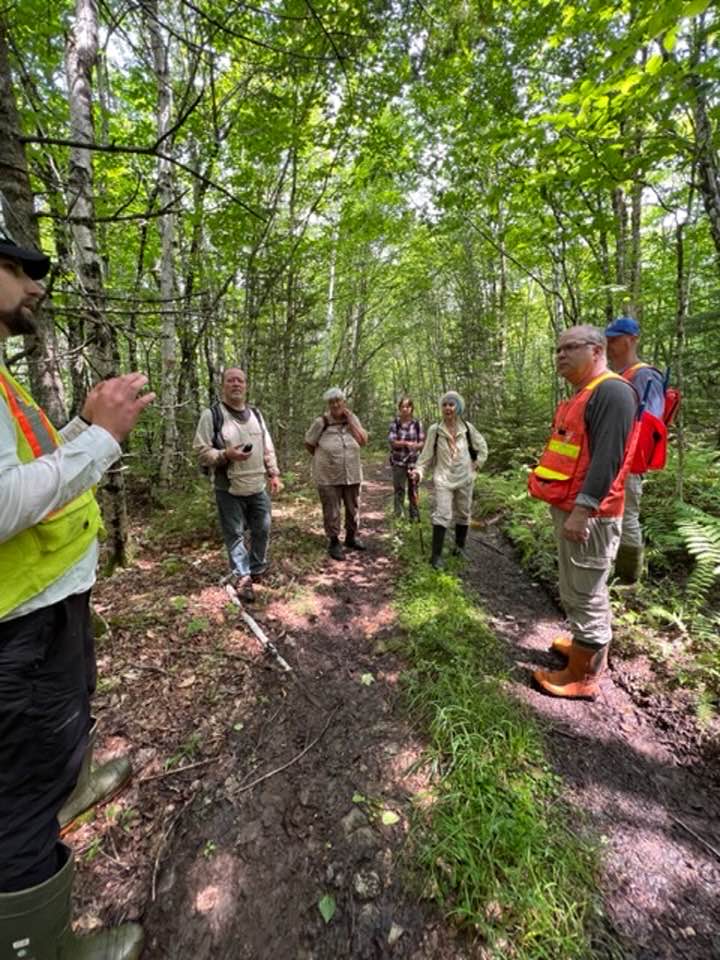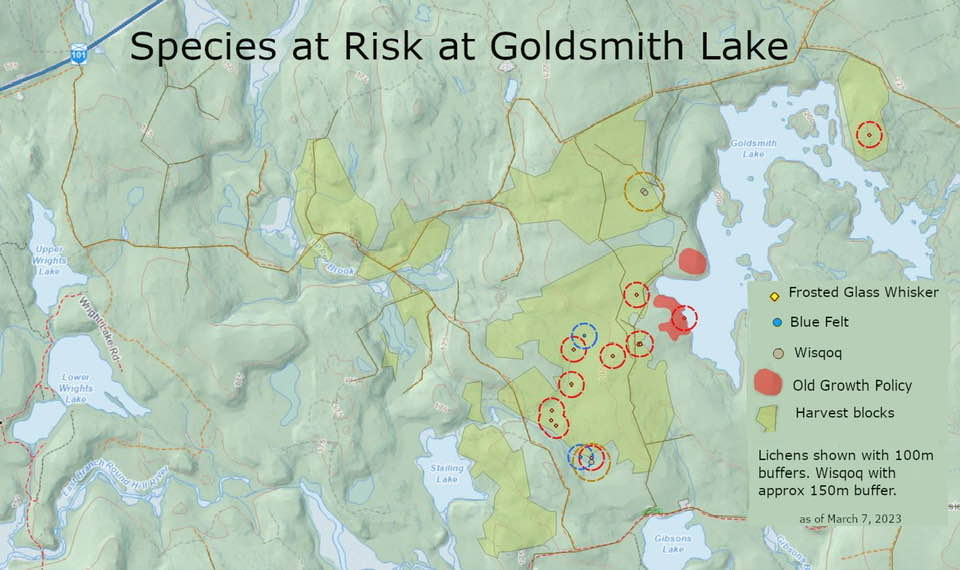By Nina Newington in a post on the Healthy Forest Coalition FB Page, July 25, 2023
On July 20th, citizen scientists met with Department of Natural Resources and Renewables personnel in stands approved for logging on the west side of Goldsmith Lake in Annapolis County. The 5 citizen scientists – including me — showed members of DNRR’s old-growth forest team a couple of areas where we had identified Frosted glass whisker lichens, a species at risk recognized federally and provincially as an old growth indicator. DNRR were very clear that anything they classify as old-growth is automatically protected under the province’s Old Growth Forest Policy. Extensive discussions ensued about how you define and identify old-growth…
The discussions were civil, friendly even, and informative. We participated in an old-growth scoring exercise. All agreed that future meetings would be in order.
And yet, and yet the gulf between our very different priorities remained. There are so many places where the requirements of the forestry industry shape DNRR’s practices, consciously or unconsciously. For example, defining an old growth forest in a basic enough way that a forest tech can be trained in a day and a half to identify one. This leads to an emphasis on tree size and age rather than looking at more complex indicators of ecological continuity such as lichens. This in turn influences which forests will be protected from logging under the old-growth policy and which will not.
 From the citizen scientists’ point of view, the priority can no longer be forestry because we are in the midst of a biodiversity crisis. Forests that have had the time to develop complex structures, offering lots of nooks and crannies aka microhabitats, support a huge array of life forms and should be protected, whether or not they fit DNRR’s particular definition of old growth. Logging of any sort destroys the ecological continuity that makes old forests so important. We can’t afford to keep losing the best habitat that’s left in this province. How else will we ever rebuild the healthy ecosystems we all rely on for survival, humans and the more-than-human world alike?
From the citizen scientists’ point of view, the priority can no longer be forestry because we are in the midst of a biodiversity crisis. Forests that have had the time to develop complex structures, offering lots of nooks and crannies aka microhabitats, support a huge array of life forms and should be protected, whether or not they fit DNRR’s particular definition of old growth. Logging of any sort destroys the ecological continuity that makes old forests so important. We can’t afford to keep losing the best habitat that’s left in this province. How else will we ever rebuild the healthy ecosystems we all rely on for survival, humans and the more-than-human world alike?
In the interests of civility we chose to focus on what we could learn about DNRR’s thinking and practices. It’s likely both sides came away with more respect. But it is also depressing to see that business-largely-as-usual seems to rule the roost in a year that has seen such climate-change caused devastation to the forests of this province. It’s not a surprise but I wish it was.

